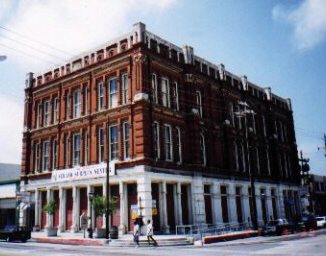
Founded in the 1830's, Galveston quickly became important to the economy of Texas and reached it's peak architecturally in the late 1800's. The boom ended in 1900 when a devastating hurricane took six thousand lives out of a population of 37,000. One third of all the buildings were destroyed. Nearly every structure sustained damage. Houston gained the edge as the main seaport for SE TX. During the years following the hurricane Galveston erected a 17 foot sea wall that eventually extended six and a half miles along the island's Gulf coast. Levees were built to section off areas of the island. Sections were filled in one at a time in order to raise the elevation of the island, so as to minimize flooding from storm surges. As each section was filled in, the existing buildings were raised up on stilts or blocks. |
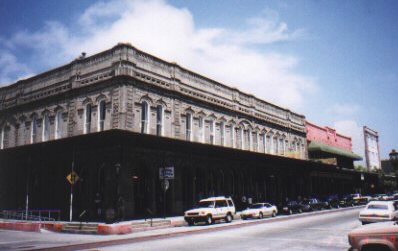
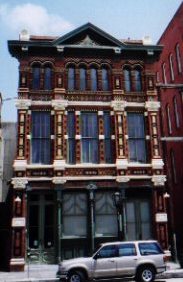
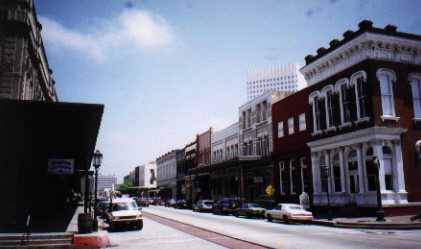
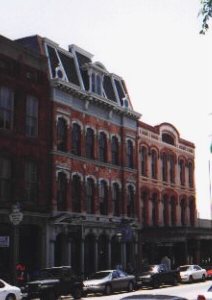
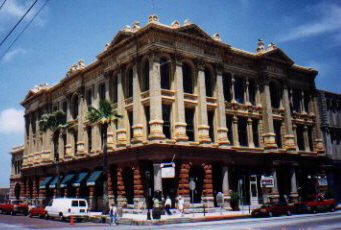
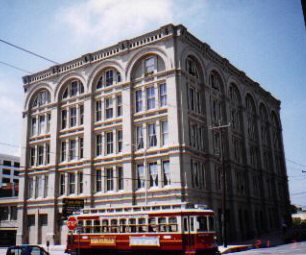
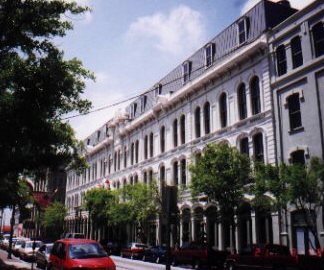
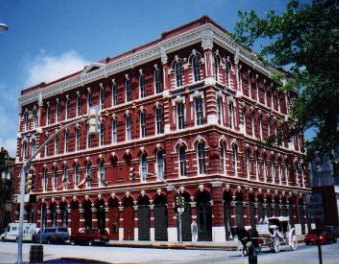
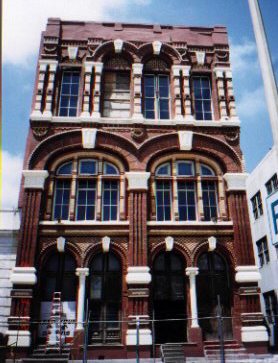
This page was last updated on: May 9, 2002
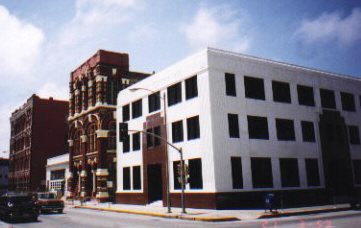
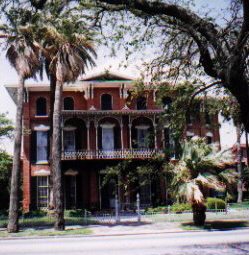

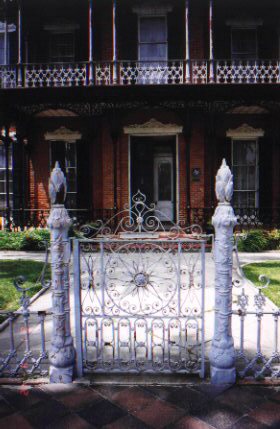
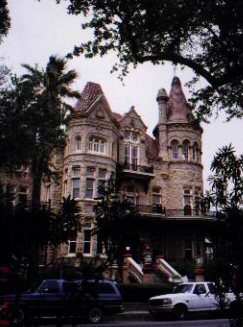
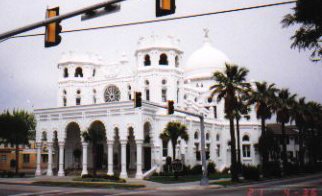
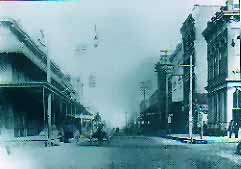
My visit to Galveston lasted less than a day, but I was impressed with the architecture I saw. The pictures on this page were taken in two areas: downtown (near The Strand - shown above in 1894), and on a small section of Broadway, the main boulevard entering the island fom the north. I didn't find a book on Galveston's architecture until late in the day, and so, for the most part, didn't know what I was facing when I took most of the pictures. The book I eventually found, "Galveston Architecture Guidebook", by Ellen Beasely and Stephen Fox, is one of the best books I've seen about the history and architecture of a specific city. Paging through it after I left Galveston, I realized that I would have to return one day. |
Above: The Strand a little over a century later. The photo on the left shows the Moore, Stratton & Co. Building, built in 1882. The architect is unknown. In the photo on the right you can see the former First National Bank Building, built in 1878, probably by N. Tobey, Jr.. It's the red brick building on the corner with the white trim. It's now the Galveston Arts Center. |
H.M. Trueheart & Co. - 1882 - N.J. Clayton. |
Merchants Mutual Insurance Co. - 1870 - P.N. Comegys Bolton Estate Building (right) - 1877 - Clayton & Lynch |
W.L. Moody Building - 1883 - N.J. Clayton |
Ball, Hutchings & Co. - John Sealy Office Buildings - 1896 - N.J. Clayton & Co. |
Nicholas Clayton (1840-1916) became the pre-eminent architect of Galveston after his arrival on the island in 1872. |
Clarke & Courts Building - 1890 - N.J. Clayton & Co. |
Kauffman & Runge Bldg. (now Stewart Title Bldg. - 1882 - Eugene T. Heiner |
Leon & H. Blum Building (now Tremont House) - 1879, 1882 Eugene T. Heiner |
Above: Galveston Cotton Exchange & Board of Trade - 1940 - Ben Milam Left: Galveston News Building - 1884 - N.J. Clayton (The News building is to the left of the Board of Trade, above) |
Even though I entered Galveston on Broadway, I didn't notice the buildings below until the end of the day. My friend Harold thought I'd like to see the beach, so that was our first stop. (After all, just a few days earlier we were in the snowy Rocky Mountains. At the beach in Galveston we saw surfers. Made a great contrast for our trip - snow to sun, 8000 feet to sea level.) Once we got downtown I parked the car, then started running up & down several blocks to take as many pictures as I could. Believe it or not, I didn't even know who N.J. Clayton was until after I bought the Galveston Architecture Guidebook. As it turned out, the majority of my pictures were of Clayton buildings. |
Below: The Open Gate (George Sealy Mansion) - 1891 - McKim, Mead & White Not Pictured: Stable - 1892 - N.J. Clayton & Co. |
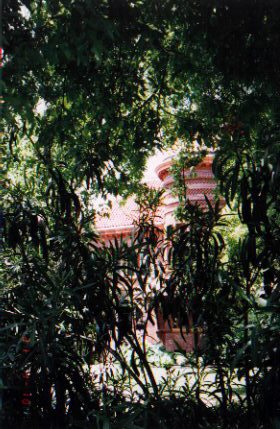
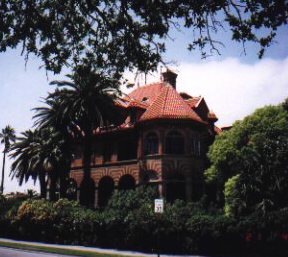
Ashton Villa - 1859 - architect unknown Interestingly, the maker of the cast iron fence and gate is known. It was made by Wood & Perot of Philadelphia. |
Moody Mansion - 1895 - W.H. Tyndall |
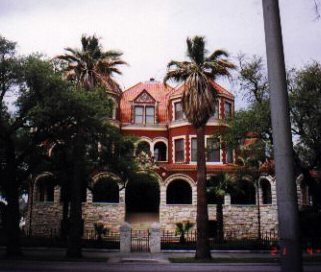
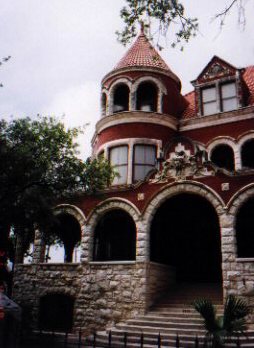
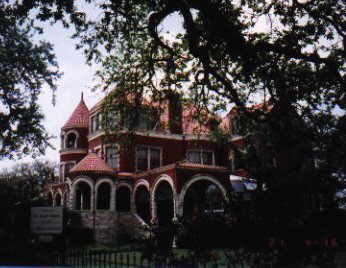
Sacred Heart Catholic Church - 1904 - Br. Peter Jimenez, SJ Dome: 1912 - N.J. Clayton |
The Bishop's Palace (originally Gresham House) 1892 - N.J. Clayton & Co. |
The church is across the street from the Bishop's Palace. Time constraints didn't allow me to tour any of the house museums on Broadway. I was very disappointed that I missed the last tour of the Bishop's Palace. Perhaps when I visit New Orleans for the first time I'll be able to make a side trip back to Galveston. |
GALVESTON, TEXAS |